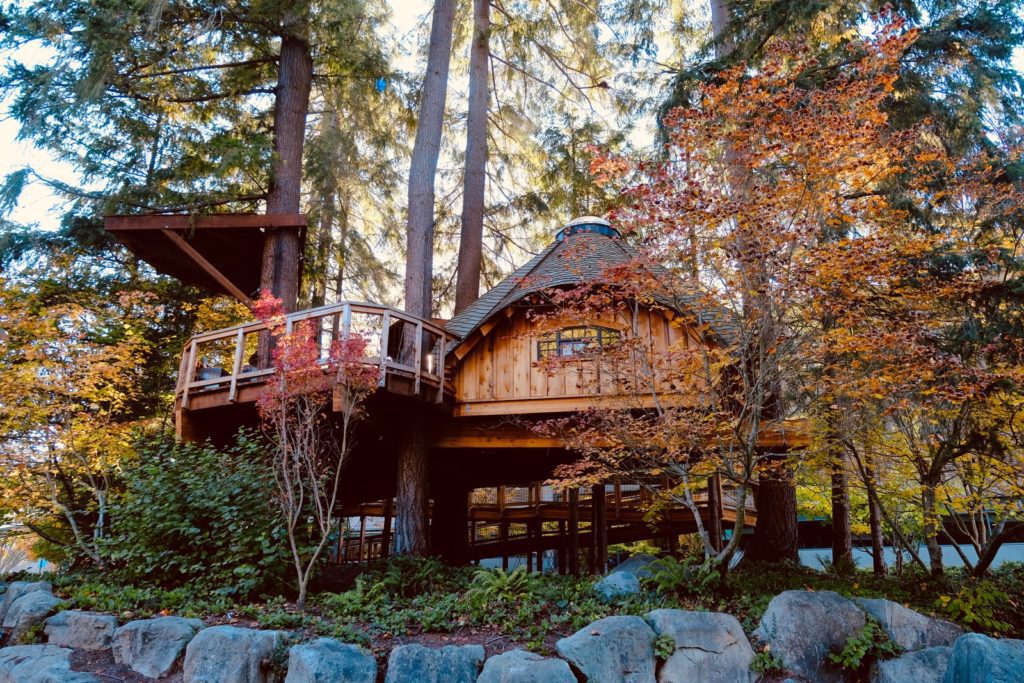Treehouses used to be little ramshackle hideouts for kids, but adults have begun recognizing the benefits of building their own arboreal abodes. In fact, the TV network Animal Planet has chronicled some of these grown-up hangouts on the show “Treehouse Masters.”
Whether you want to build a luxurious treehouse that can accommodate the whole family or just want to create a small, quiet space for reading a book on a spring day, the following tips can help you get started.
Picking a Tree
You can build your treehouse using a single tree for support, or — if you have a grouping of several trees — you can incorporate numerous supporting trees in your design. But if you’re not an architect and don’t plan to hire one, avoid complicated multi-tree structures.
An 8-by-8 treehouse will need a tree with a trunk at least 12 inches in diameter. When choosing a tree, look for signs of possible health problems, like bare spots or dead branches. If you’re not certain your tree is healthy, you can arrange for an arborist to examine it and assess whether it can support the weight of a structure.
Before building, make sure you’re legally able to construct a treehouse on your property. You may need a building permit, especially if you’re going all out and installing electrical wiring or plumbing.
Making a Plan
You need some advanced skills to build a geodesic dome treehouse, where rivets hold triangular panels that open to allow breeze through. So if you’ve never built a doghouse or a spice rack, stick with a basic design.
Plenty of tutorials are available online, if you need to see the basic steps involved. You’ll even find companies that sell complete plans for treehouses. Even if you use someone else’s basic concept, you can personalize your structure to make it unique.
Turning a Treehouse into a Treehome
A treehouse should be fun, so don’t get so hung up on the work involved that you neglect to incorporate whimsical features.
You could decide to install only a rope ladder, so you can pull it up to prevent unexpected visitors. Make window cutouts, and use recycled cabinet doors as shutters that you can close on chilly evenings. And you can do a lot with paint, too — even camouflage effects that make your treehouse nearly invisible from the ground.
Weather-proofing
If you use raw lumber to build your treehouse, apply a finish that protects the wood from water damage. You should also include plenty of ventilation; if air can move through freely, you’ll lower the risk of mold or mildew, and your treehouse will be more stable in strong winds.
The roof should be pitched to allow snow and rain to run off. (If you’re highly industrious, you can add shingles to the roof as added protection).
Calling for help
If at any point you feel uncertain about the safety of your treehouse, find a professional to help you. You may need to hire someone to finish the job, or you may need a second opinion on the sturdiness of your overall design. You’ll enjoy your treehouse a lot more knowing it’s structurally sound.

